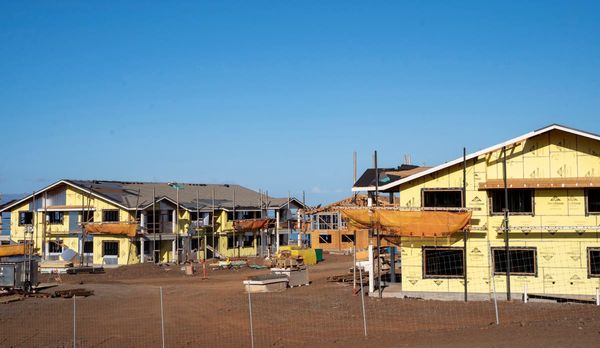
The scrubland of South Australia's Yorke Peninsula is brimming with the pitter-patter of little marsupial paws as a bettong baby boom brings the species back from the brink of extinction.
In a recent monitoring study, more than 95 per cent of female brush-tailed bettongs in the Dhilba Guuranda-Innes National Park were found with young in their pouches.
The animals, known as yalgiri to the local Narungga people, were recently introduced to the area as part of the Marna Banggara restoration project after they had been locally extinct for more than 100 years.
The diminutive creatures are members of the rat-kangaroo family and - as the name suggests - have long, bushy, brown tails that make up half the bettong's roughly 60cm length.
More than 190 yalgiri had been released in the park since 2021, with the majority originating in Western Australia and two smaller contingents coming from nearby Wedge Island, said ecologist Derek Sandow.
"If we can keep fox and feral cat numbers down, we're hopeful that within a few years, they will move through this native vegetation corridor into Warrenben, which is about 10km away," he said.

Tom Hurley, an assistant curator at Monarto Safari Park, said the high proportion of females with joeys in pouch was of one of the most exciting parts of the monitoring exercise.
"It proves that the population is breeding and thriving," he said.
Marna Banggara, formerly known as the Great Southern Ark, is a project aimed at allowing endangered species to rebuild a sustainable population on the mainland, away from habitat destruction and the predation of feral animals.
Located on the peninsula's southern tip, it provides an ideal sanctuary for vulnerable native critters to reproduce, bounded on three sides by water and protected at its eastern extent by a fence stretching from coast to coast.
Brush-tailed bettongs once occupied more than 60 per cent of mainland Australia before introduced predators and habitat loss pushed them to the brink of extinction.
The species only survived in tiny pockets of Western Australia, offshore islands in South Australia, and in a handful of fenced sanctuaries.
They support the landscape by turning over dirt and leaf litter while searching for food such as fungi, allowing water to seep into the soil and native seeds to germinate and disperse.
National Parks and Wildlife Service ranger April McInerney said the bettongs have already made a noticeable difference rejuvenating land once used for farms and mining.
"With the pastoral scars, they've dug up the earth and allowed more seeds and water to come in which is actually rehabilitating those areas," she said.
Other locally extinct species like the southern brown bandicoot, red-tailed phascogale, and western quoll will also eventually be reintroduced to Marna Banggara to support the ecosystem.







